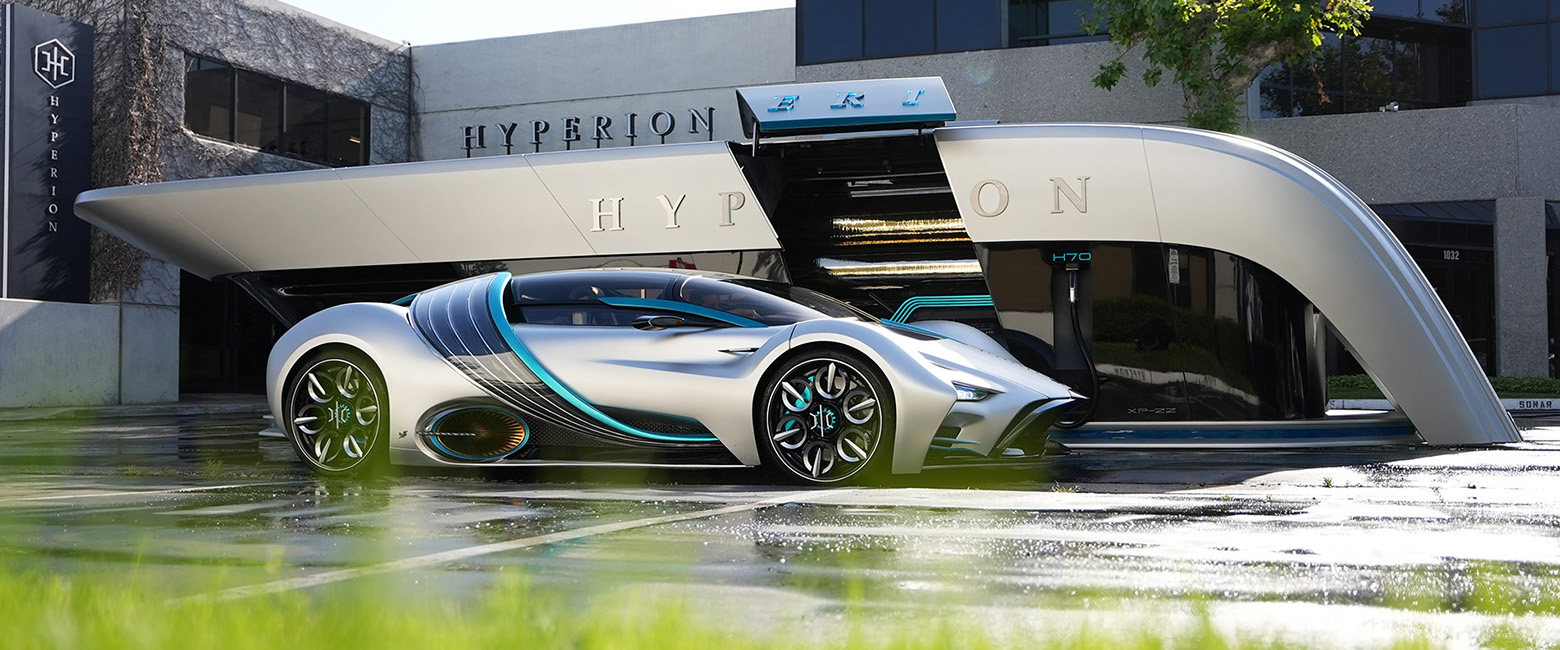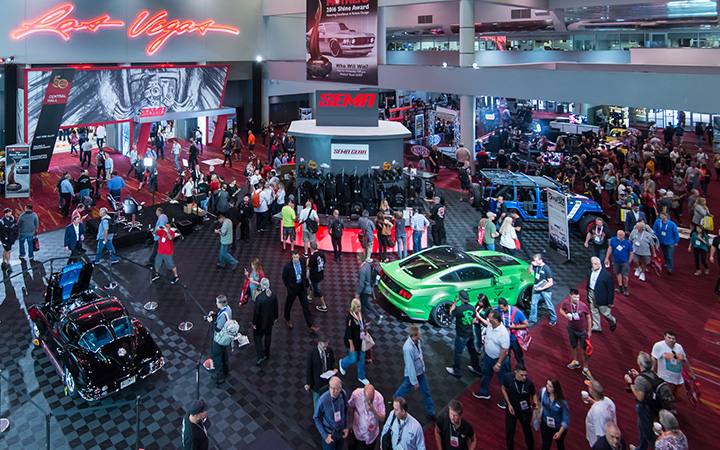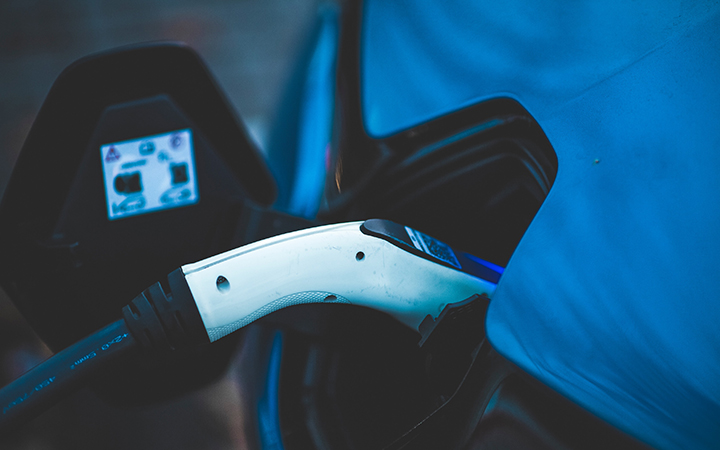In the race to replace the internal combustion engine, all the publicity and hype has been around battery electric vehicles. But there is another technology that’s challenging the ascent of the battery EVs: hydrogen power.
Hydrogen is an ideal fuel. It is the most abundant element in the universe. We can extract it from water—which is precisely where hydrogen cars get their energy.
Here’s the science at its most basic.
In its molecular state, hydrogen is made up of two atoms bonded by an electron (to make water, just add an oxygen atom). By passing hydrogen molecules through a fuel cell (which takes water from the air) it’s possible to split the two atoms apart and release the energy in the electron to power whatever you need to power. In the case of today’s Future Ride, that means powering the Hyperion XP-1.
If we have to say goodbye to the internal combustion engine, then at least the Hyperion XP-1 looks like the future that Hollywood studios and video game designers have been promising us for years. It’s stunning.
Weighing in at just over 1000 kg, with a powertrain comprising hydrogen fuel cells and supercapacitors (instead of batteries), a three-speed transmission and four axial-flux electric motors, this hypercar has a range of 1635 km and a power output in excess of 1500 kW. It does zero to 100 km/h in 2.2 seconds and has a top speed of 356 km/h. It has a small battery, recharged using regenerative braking. Those aren’t just compelling promises; this is what Hyperion has already delivered. The XP-1 isn’t a concept car; you can go online, watch videos of the XP-1 in action, and pre-order yours now (although they’re only making 300 at the moment).
Hyperion’s background is in delivering hydrogen propulsion systems to NASA, various other space agencies, and engineering firms. Their stated goal in creating this sleek hypercar is to get people educated and excited about hydrogen—perhaps so when people think of hydrogen’s use in transportation, their minds aren’t immediately cast back to old newsreel footage of the Hindenberg disaster.
In an interview with Business Insider, Hyperion Chief Executive Officer Angelo Kafantaris said: “We needed to focus on a car, to tell the story in a compelling way to the consumer”.
What better way to do that than with a fast, sexy machine that’s quicker to 100 km/h than any model of Tesla, with twice the range and ticks a heap of other boxes, as well?
Which boxes, you may ask? We’ve already looked at performance, so let’s start with the design. The XP-1 looks cool. It has a carbon titanium monocoque structure, aluminium alloy suspension, a titanium reinforced composite body, and a profile set to turn heads.
Then, there’s the hydrogen fuel cell technology that overcomes many of the problems that have been a stumbling block to the fast adoption of EVs. Hydrogen gas is very light, compared to heavy batteries, making the vehicles more energy efficient, and giving them a much longer range than EVs. There’s no need to spend three-quarters of an hour at an electric charge point, as the Hyperion XP-1 recharges in three to five minutes. Hydrogen gas doesn’t wear down or degrade. If Hyperion is to be believed, hydrogen is all upside.
Lastly, there’s the emissions. What comes out of the XP-1’s spectacularly futuristic exhaust? Nothing more than water and water vapour, the synthesised by-product of the hydrogen fuel cells.
Short of scientists discovering nuclear fusion, Kafantaris says hydrogen is the best fuel humanity can hope to use. Which is why his company—which, after all, is in the hydrogen business, not the vehicle manufacturing business—is now launching hydrogen refuelling stations all over the United States. The stations, which also have EV charging stations, are equipped to produce hydrogen onsite using water electrolysis. The plan is that if you make it easier for people to refuel, you remove a barrier to them buying a hydrogen (or electric) car.
Of course, not many of us can afford a hypercar like the XP-1. But the XP-1 is really more about the “hype” than the “car”. Many other vehicle manufacturers are playing with designs and releases of hydrogen models more suitable to your family’s daily commute. Hyperion is just selling us the sizzle. It could yet be the likes of Honda or Toyota who sell us the actual sausage. But who really knows what the future holds? Maybe the future is still battery EVs? If the future is hydrogen, however, it might just be the XP-1 that gets us there.


